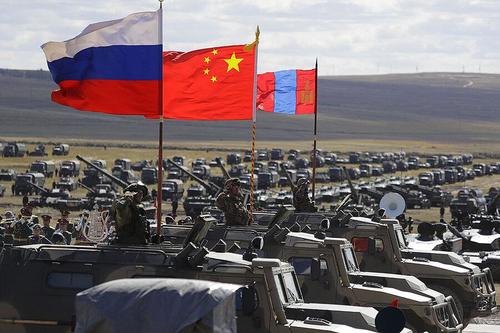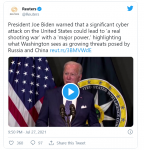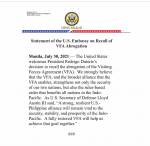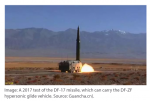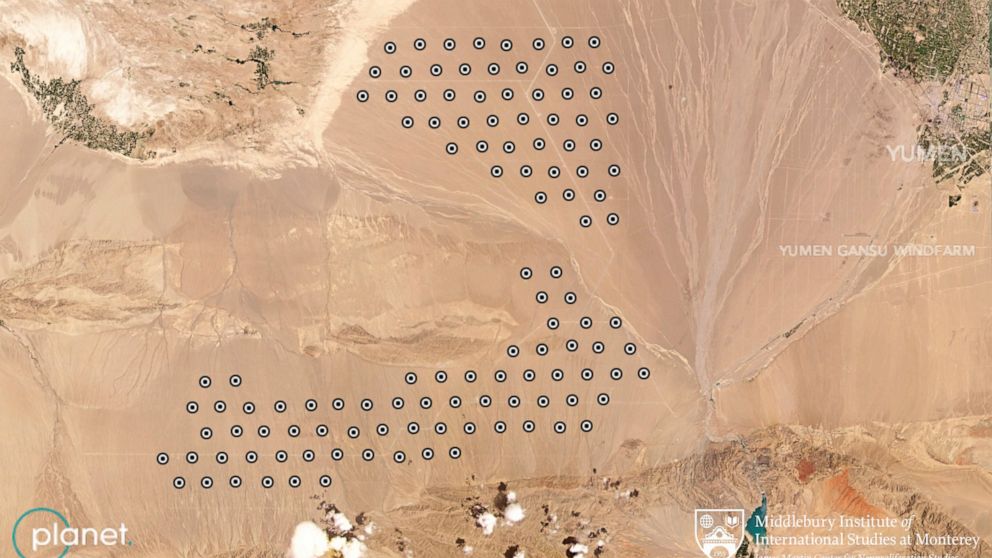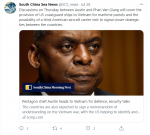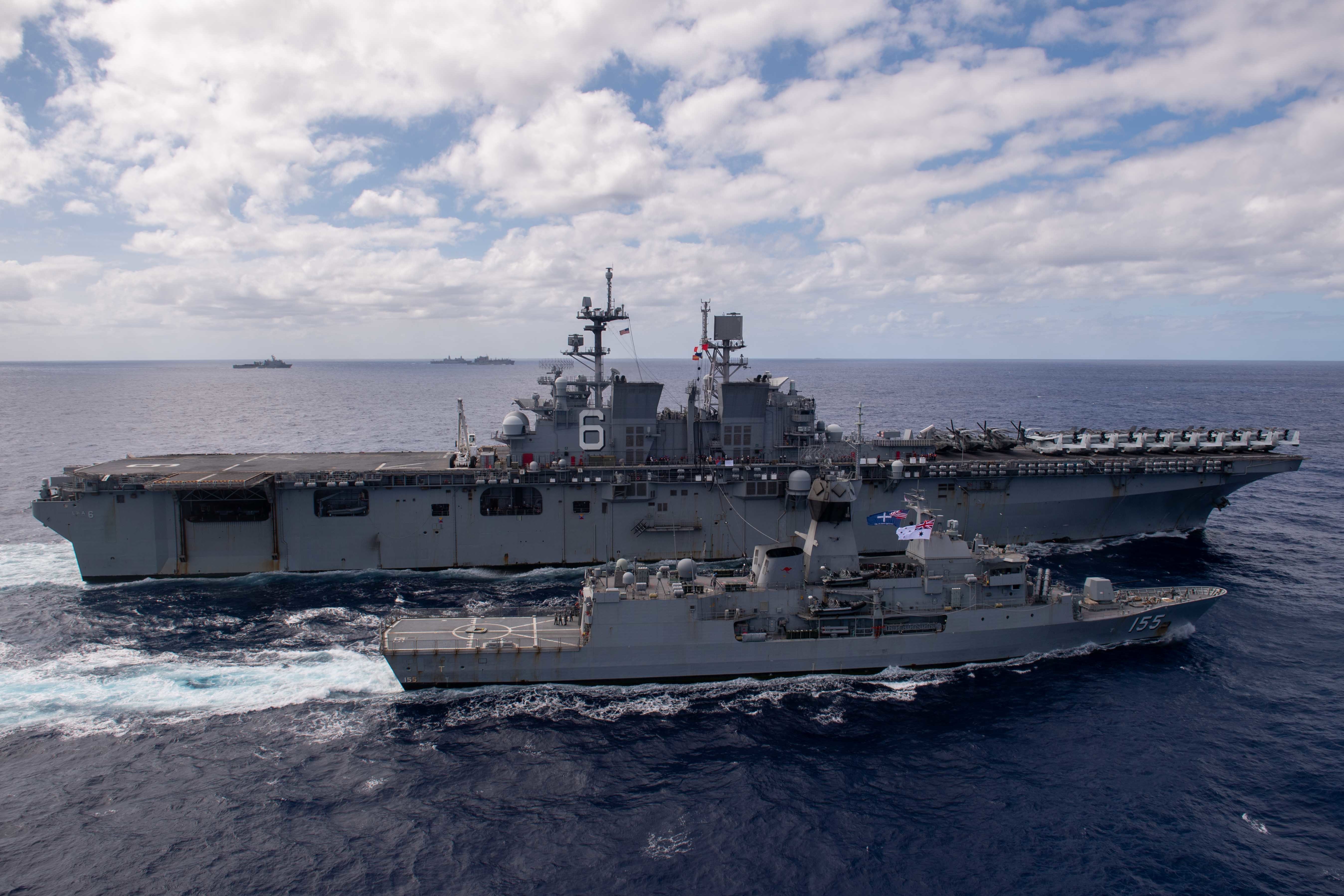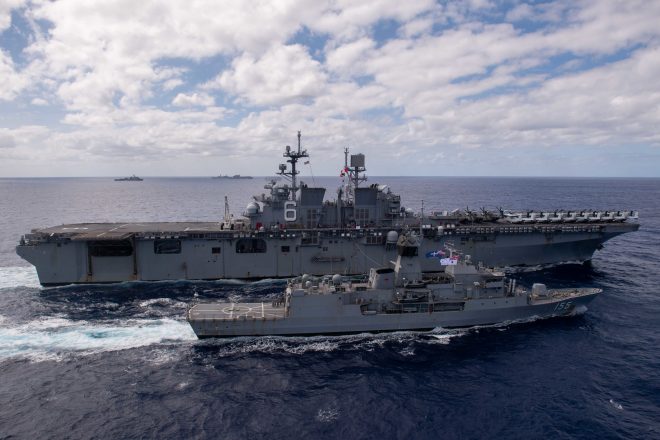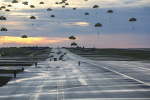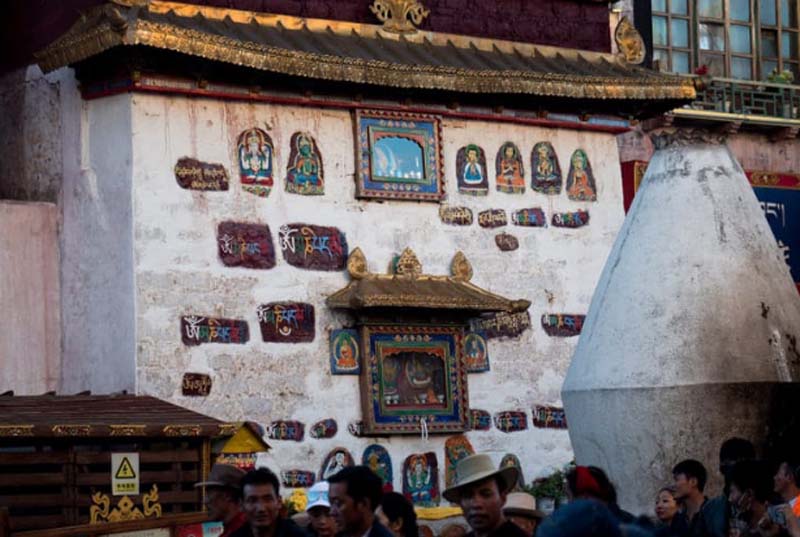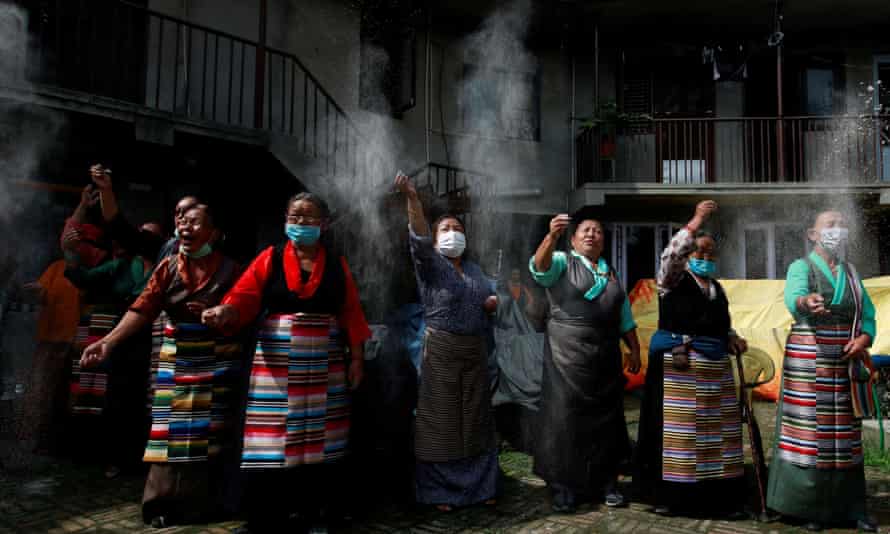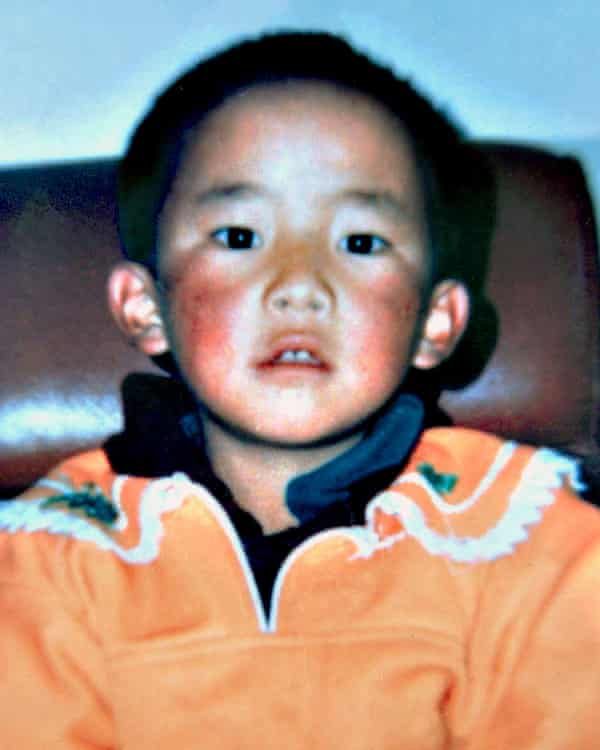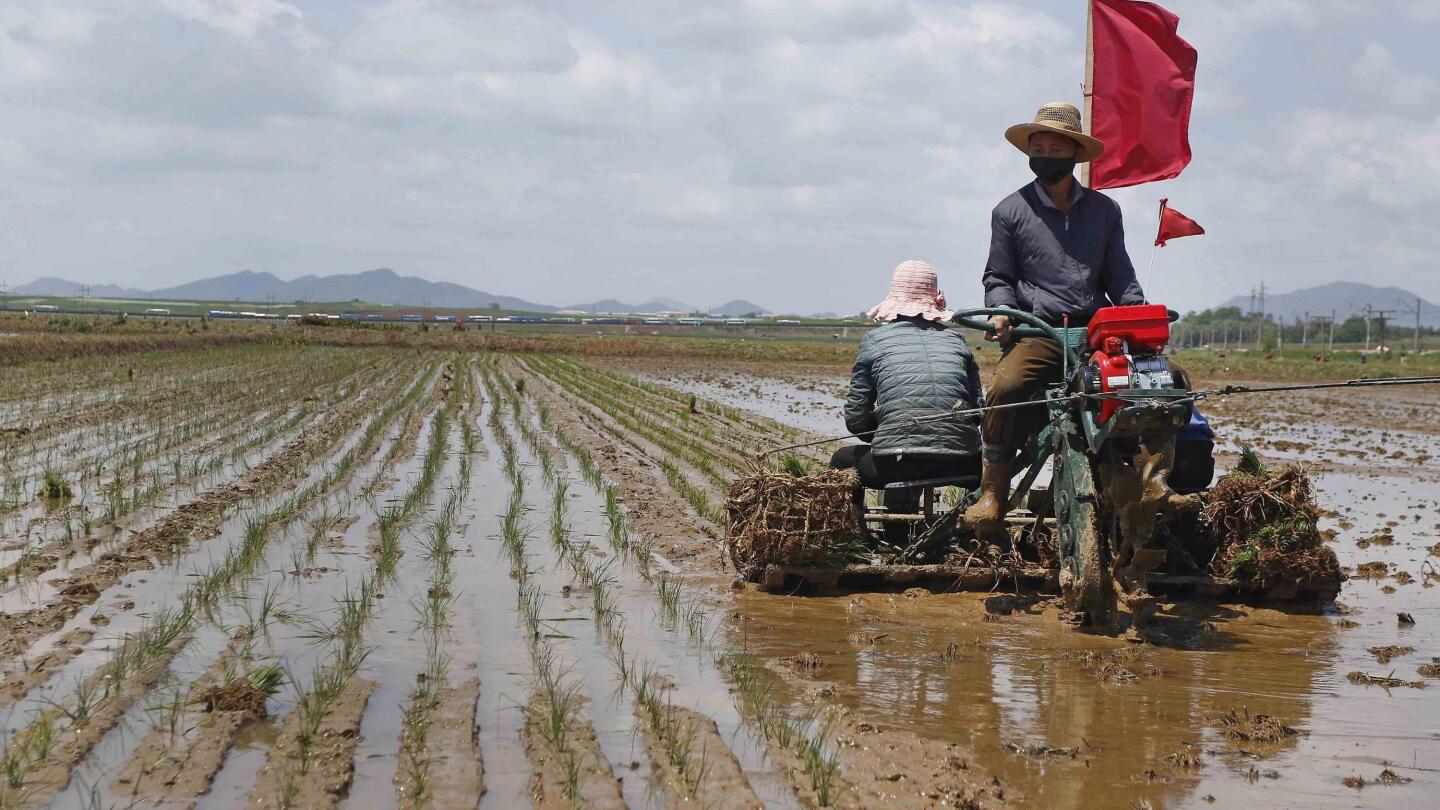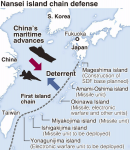A Grand Bargain With North Korea
Pyongyang’s Economic Distress Offers a Chance for Peace
By Vincent Brooks and Ho Young Leem
July 29, 2021
South Korean President Moon Jae-in and U.S. President Joe Biden at the White House, May 2021
Jonathan Ernst / Reuters
Sign in and save to read later
Save to Pocket
Print this article
Share on Twitter
Share on Facebook
Send by email
Get a link
Change is underway on the Korean Peninsula. At the Eighth Korean Workers’ Party Congress in January, North Korean leader Kim Jong Un orchestrated a decisive shift in the country’s bedrock economic and military policies. He moved away from his father’s “Military First” principle (
Songun), which gave precedence to the Korea People’s Armed Forces, and supplanted it with an ideology of “People and Masses First” (
Inmin Daejung Jaeil). This reorganization of North Korea’s system of governance empowers the ruling party at the expense of the KPAF, supporting Kim’s perpetual quest for power consolidation. More important, it sets the stage for efforts to resuscitate North Korea’s dying economy.
The recent level of restraint by the North Korean military has been an equally important change. During the October 2020 military parade, the KPAF showed off the Hwasong-16, its newest intercontinental ballistic missile—but did not accompany its presentation with any aggressive rhetoric or direct mention of the United States. This stands in stark contrast to its last parade, in September 2018, where, like parades before it, several tanks displayed the slogan: “Destroy the U.S. Imperialist Aggressors, the Sworn Enemy of the DPRK!”
Kim’s criticisms of U.S.-South Korean joint military exercises and his country’s firing of cruise missiles and short-range ballistic missiles have also been more notable for their level of self-restraint than for escalating tensions on the peninsula. The United States and South Korea are scheduled to conduct further joint military exercises later this summer, so it remains to be seen whether this self-restraint will continue.
Stay informed.
In-depth analysis delivered weekly.
These changes represent a recognition by Kim that his country is in a worsening situation. North Korea’s economy has been devastated by the combined effects of COVID-19 restrictions, international sanctions, and a relentless series of natural disasters. Last year, North Korea
experienced a crippling 8.5 percent economic contraction. Kim himself has described the food situation as “getting tense,” and the UN Food and Agriculture Organization has
estimated that North Korean demand for basic foodstuffs exceeds supply by 970,000 tons.
Economic security is currently Pyongyang’s top priority. The People and Masses First ideology has been repeatedly invoked to apply pressure on party officials to combat bureaucratic delays and corruption while also encouraging the public to display loyalty to Kim in the face of “severe difficulties” and “accumulating hardship.” Kim is treading carefully on the military front so as not to foreclose the opportunity for dialogue with the United States, which could serve as a guarantor of his country’s future economic security.
For U.S. President Joe Biden and South Korean President Moon Jae-in, Pyongyang’s shift represents an opportunity. They should aim to resolve North Korea’s underlying security concerns—particularly its economic security—in return for progress on denuclearization, the reduction of Pyongyang’s dependence on China, and North Korea’s eventual integration into the U.S.-led liberal international order with the close support of South Korea. At the same time, Washington and Seoul must continue to work on
cementing their own alliance. Their aim should be to approach North Korea from a position of strength, denying Pyongyang the advantage of facing an incoherent alliance. Achieving superior joint military and diplomatic power is what will enable the allies to deter Kim’s threats, allowing for a new approach to North Korea that can pave the way to a lasting peace.
KEEP YOUR FRIENDS CLOSE
As a first step, Seoul should eliminate the political obstacles that keep U.S. military forces in South Korea from accessing major training facilities. Access to the few training areas available for maneuvers and live ammunition usage, which are key to maintaining military readiness, has been restricted, leading the United States to consider whether to redeploy certain forces, such as Apache attack helicopter crews, to Japan and Alaska for training.
South Korean domestic political pressures are the main driver of limitations on training. The Moon administration adopted these populist policies during the Trump presidency but has recently approached these issues in a less political fashion. This must be sustained as South Korea enters campaign season, with presidential elections scheduled for next March.
The U.S.-South Korean summit in May, which brought Biden and Moon together for the first time, was an excellent start toward strengthening the alliance. The U.S. commitment to provide South Korea with COVID-19 vaccines and to engage in joint vaccine research sent a powerful signal to South Koreans that the United States is placing a high priority on the relationship. These actions reciprocate South Korea’s decision to send personal protective equipment to the United States in the early stages of the pandemic, thus building mutual goodwill and trust.
Washington and Seoul also communicated their intent to coordinate their actions in the broader Indo-Pacific region, focusing especially on the Association of Southeast Asian Nations (ASEAN). This broader cooperation opens a new strategic horizon for the alliance and serves to reassure the leadership and people of South Korea that the United States is considering its ally’s perspective on matters vital to South Korea’s security.
Washington and Seoul should deny Pyongyang the advantage of facing an incoherent alliance.
Despite this progress, two challenges lie ahead for the U.S.-South Korean alliance. First, North Korea and China will continue their efforts to drive a wedge between the United States and South Korea. From military threats to promises of diplomatic engagement, Kim is adept at sending different messages to Washington and Seoul. China, meanwhile, often employs economic coercion to achieve its goals: in retaliation for the decision by the United States and South Korea to deploy the Terminal High Altitude Area Defense (THAAD) missile defense system in 2016, Beijing
blocked a wide range of South Korean industries and businesses from accessing the Chinese market. The business sectors affected ranged from conglomerates directly associated with the THAAD deployment to tourism and K-pop. Although the alliance stood firm and Beijing ultimately yielded, more bullying from China should be expected as the United States and South Korea move closer together.
Both U.S. and South Korean leaders must make concrete preparations for how to coordinate their response to future acts of Chinese economic coercion. This will mean the alliance must expand its joint-defense posture beyond the traditional area of countering military invasion to include strategies designed to bolster defenses against Chinese and Russian economic tools and political warfare. This will be especially relevant as South Korea fully enters the political campaign season and is a likely target of these more insidious and shadowy influences.
Second, the allies must maintain a sense of continuity during and after the South Korean presidential elections. The main cause of the weakening of the alliance during the Trump-Moon era was the politicization of national defense to gratify populist nationalism. As South Korean political parties begin to actively position themselves against one another, there are already signs that populist candidates are taking up the mantle of anti-Americanism and anti-alliance politics. Hot-button issues, such as the development of integrated air and missile defense systems, the modernization of common command and control systems, and the indigenous acquisition of tactical nuclear weapons as a hedge against uncertainty regarding the guaranteed U.S. extended deterrence umbrella, all remain on the allies’ discussion table and are thus potentially vulnerable to the politics of populist nationalism.
Both U.S. and South Korean alliance leaders and military experts should work to find bipartisan support on crucial issues to preclude losing the valuable progress made so far during 2021. The alliance should not cede its strong position vis-à-vis North Korea and other adversaries in the broader Indo-Pacific.
KEEP YOUR ENEMIES (INCREASINGLY) CLOSER
From these firm foundations, Washington and Seoul should begin the hard work of progressively normalizing relations with North Korea. The allies’ previous attempts to alter North Korea’s behavior have involved military pressure, international economic sanctions, and winning some degree of cooperation from Beijing to push for denuclearization. For North Korea, however, this approach did not offer a convincing alternative to China’s economic dominance or the military danger posed by the U.S.-South Korean alliance.
A better approach would be to offer Kim a path toward what he desires most: a way out of his economic and political woes. U.S. and South Korean leaders should adopt a policy of “strategic deliberateness,” moving forward to deeper phases of collaboration only when mutual trust has been built. This will prevent North Korea from pocketing any goodwill without providing anything in return. Strategic deliberateness will also protect the alliance against the understandable desire to call off the entire process if North Korea reneges along the way.
The first phase of engagement should focus on efforts to signal a new relationship with Pyongyang. The United States and South Korea should provide immediate economic relief in the form of humanitarian and medical aid in response to a demonstrated willingness by North Korea to engage constructively in dialogue. Aid could be provided as part of a UN-led humanitarian mission, which would be tied to a UN Security Council resolution prohibiting missile and nuclear weapons tests.
On the military front, the initial goal would be to establish a joint commitment to de-escalate tensions and mitigate conflict risks. Several potential flash points continue to pose the risk of rapidly escalating conflict and a resumption of open warfare on the Korean Peninsula. The Comprehensive Military Agreement (CMA) took steps to increase military cooperation between 2018 and 2019, but cooperation since then has failed to advance. The military-to-military channel that created this agreement, however, is one of the most important avenues to achieving a permanent lowering of tensions and a declaration of an end to the Korean War.
The United States and South Korea will have to take risks to signal their commitment to progress. For example, declaring an end to the state of war with North Korea would represent a fundamental change to politics on the Korean Peninsula and potentially provide Kim with an opening to pivot his own domestic rhetoric regarding the United States and South Korea. It could enable further confidence-building measures, which could in turn open a pathway toward
denuclearizing the peninsula and achieving the multifaceted security guarantees North Korea truly seeks. The end-of-war declaration should not be confused with a peace treaty that would replace the current armistice agreement. The declaration would not change the current armistice system and would not be linked in any way to a peace treaty, which would have to be negotiated between the two parties.
U.S. and South Korean leaders should offer Kim a path toward what he desires most: a way out of his economic and political woes.
The second phase would normalize relations with North Korea and rebalance its position vis-à-vis China. The United States and South Korea should take bold steps to revitalize the North Korean economy: for instance, Washington could enable financial donors to create an infrastructure development fund that offers Pyongyang a ten-year interest-free loan, which would broaden the influences on North Korea’s economy beyond China. Signing a South-North Korea free-trade agreement could complement the infrastructure development fund and could be framed as a way to develop Korean solutions to Korean problems, a portrayal that appeals to both sides of the separated Korean population.
This economic package would go a long way toward diminishing North Korea’s economic dependence on China. South Korea should take a proactive role to effectively manage this new investment inflow and support capacity building and societal development in North Korea. Seoul and Washington should exchange these economic benefits for demonstrated progress from North Korea on denuclearization.
The U.S.-South Korean alliance and North Korea must also normalize their military relations. South Korea and North Korea should search for ways to prevent traditional maritime conflicts and thwart illegal Chinese fishing in the seas surrounding the Korean Peninsula. These efforts should also provide greater security and stability in the demilitarized zone (DMZ). When South Korea and North Korea can prevent these types of conflicts without escalation, the role of the UN Command will naturally be reduced.
The next step would be a peace treaty between the parties. When there is the verified destruction of nuclear weapons and the armies of South Korea and North Korea cannot realistically invade each other, it will be possible to pursue an agreement that permanently replaces the armistice. To arrive at a peace treaty, however, it is important that the alliance continues to adopt strategic deliberateness, ensuring that there are proportionate measures and concessions made by North Korea along the way. Until then, it is imperative that the U.S. and South Korean militaries maintain their robust defense posture.
A SUSTAINABLE PEACE
In the final phase, Seoul and Washington would move beyond a peace treaty and completely integrate North Korea into the alliance-led order. South Korea would take the lead as North Korea’s primary provider of trade and direct investment. For its part, the United States would become North Korea’s second-leading trading partner and primary enabler of international financing. An economic plan would chart out Pyongyang’s long-term economic growth, and the South-North free-trade agreement could be expanded into an Indo-Pacific trade partnership—giving North Korea access to markets across Asia.
These steps would cement the new economic order in Northeast Asia, improving the quality of life for millions of people. Militarily, a permanent peace plan would offer security by verifying that Pyongyang was complying with its international obligations and had destroyed its nuclear weapons. And politically, this reimagined relationship with North Korea would craft a new balance of power that diminishes China’s influence across the region.
There are many obstacles that will likely frustrate or even prevent progress in this direction. China will not cede its near monopoly over the North Korean economy easily and will likely try to disrupt U.S.-South Korean diplomatic initiatives. Furthermore, the international community will need to evaluate the risks of “saving” North Korea from the decrepitude that, if not alleviated, will likely destroy it in the future. Saving North Korea may preserve for an intolerable time the current structures of the ruling party, the more than one-million-strong Korean Peoples’ Armed Forces, and the state’s deplorable trampling of human rights. This risk may limit the number of countries that are willing to participate in helping a potentially unrepentant North Korea recover.
Alliance leaders will have to grapple with these and many other obstacles. Such is the nature of leading the transformation from an unacceptable status quo to a better future, without passing through the crucible of war once again.
Pyongyang’s economic distress offers a chance for peace.

www.foreignaffairs.com

